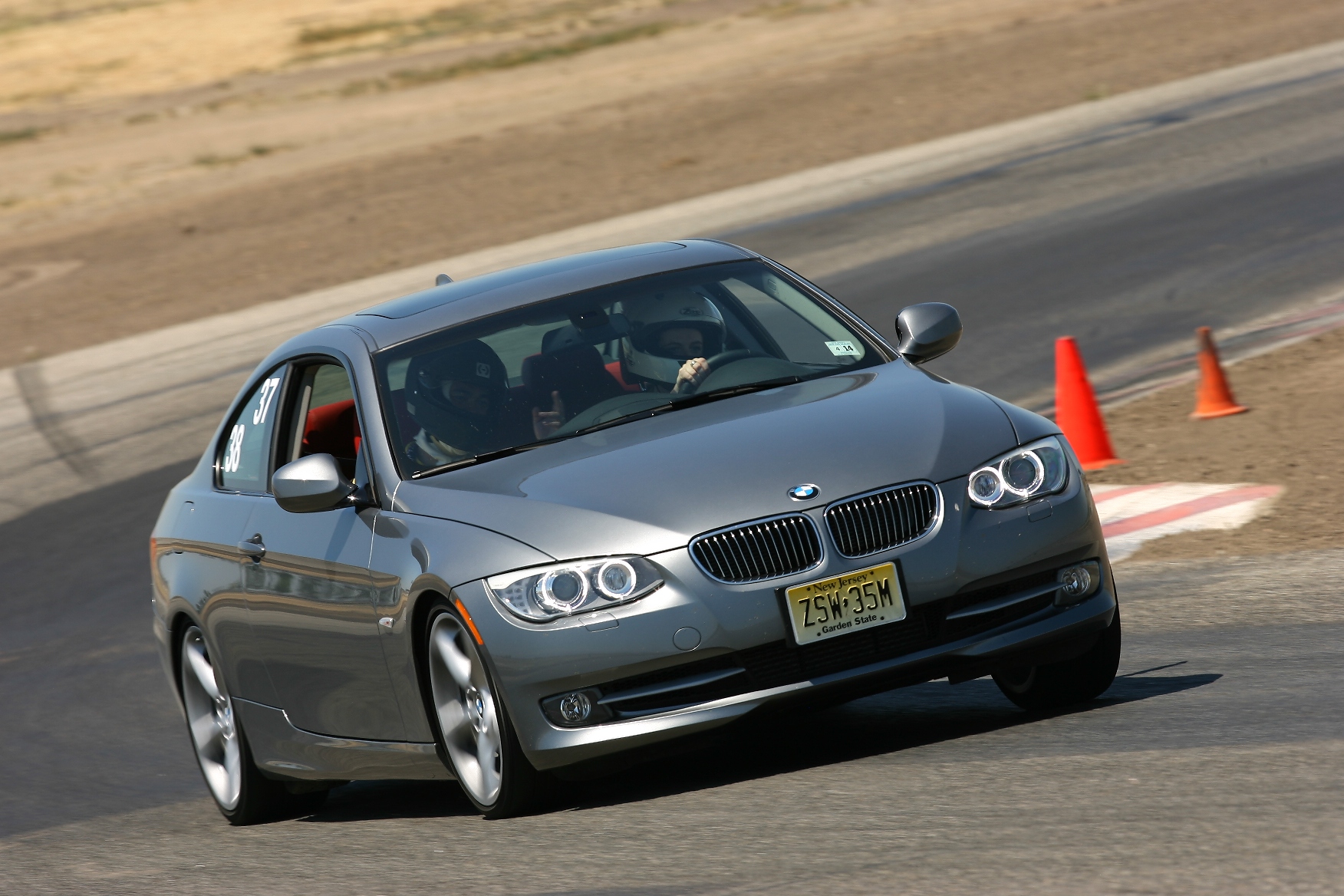
I’ve been to a variety of driving schools, with instruction ranging from cursory to custodial. When the opportunity came for my daughter Alex and me to attend a two-day BMW Car Club of America high-performance driving school in Southern California, I thought I knew what to expect.
I’d be in the advanced class (of course — after all, I have my vintage license), lollygag around at a fairly high speed, and mostly feel good about myself. This driving school was really about Alex learning to pilot a high-performance machine (in this case a 6-speed manual 2011 BMW 335i, arranged for by Satch Carlson, a longtime SCMer and editor of Roundel, the BMW CCA magazine), getting good instruction and becoming a better driver. I was just along for some fun.
Buttonwillow Raceway, about an hour north of Los Angeles, winds through the desert outside of Buttonwillow, CA. The town consists mostly of a half-a-dozen truck stops. It’s not exactly Monterey and Laguna Seca, but it’s a good place to drive fast cars.
We were greeted by Eddy Funahasi of the BMW CCA, issued helmets and separated into our respective groups. I was in Advanced and Alex was in Intermediate (she had just finished a Pro Drive school in Portland in our Lotus Elise).
The intensity of the pre-session chalk talk should have alerted me that this would be a bigger challenge than I had expected.
Complex confusion
In my first driving session, the group of cars exploded into a group of angry hornets when the green flag dropped. Consisting mostly of late-model BMWs, there was also a smattering of well-prepped older BMWs and a few other exotics.
Buttonwillow is a confounding track, full of compound curves with decreasing radii and slight elevation changes. Expecting the white-hanky politeness of vintage racing, I felt like I had stepped into a free-fire zone with bullets — aka BMWs — zipping by. I was slow, and they were fast.
The chalk talk after the session was as intense as the one before it. My favorite phrase came from lead instructor Patrick Demorais. “The car already knows what to do. You just have to learn to set it free.”
The comments were to the point — and merciless. “It’s time for you to take responsibility for your own improvements as a driver.” “Be ruthless with yourself. The tendency is to give yourself a break, and that’s not okay.”
Despite doing everything I was asked, including pre-driving the course in my head while I sat in my chair — and viewing the gas pedal, steering wheel and gearshift as weight transfer devices — I felt even more lost in the second session. I didn’t understand the car, the track or my fellow drivers. I asked to be transferred down a class.
Relaxation and clarity
Instructor Steve Johnson told me to relax, that I was actually getting better, and that I was trying to absorb a lot of new information in a very short period of time. I also had to drive with an extra layer of caution, as returning our 335i to BMW with dented fenders and a scratched roof was not an option. Everyone else was going pedal-to-the-metal.
My third session was completely different. My instructor was Margaret Chang, who started the session by taking me for a couple of laps in the spec-Miata she races. “This isn’t even close to racing. It’s just play time,” Chang said as she whipped her car around the track. “You want to see racing? Start mid-pack in a group of 60 nearly-identical Miatas. That’s racing.”
Once I was back behind the wheel, the complex curves seemed simpler, the straightaways longer and the braking areas shorter.
As I fell into a rhythm, I actually passed a couple of my advanced group compatriots. My confidence increased, I went deeper into each turn and clipped each apex at a higher rate of speed.
That was when I was reminded of something else an instructor had said: “The most dangerous corner on a racetrack is the one after a pass.”
After I completed a pass coming into the Star Mazda turn, the view of the landscape through my windshield began rotating, and suddenly the BMW’s burgundy-metallic paint had a nice covering of dust. Everywhere.
By the end of the second day, I was a better, more thoughtful driver. The school had turned out to be much more educational and intense than I had expected, and I recommend it to anyone who wants to improve their driving skills. You don’t need to own a BMW to participate, and cars from old to new are welcome.
Alex? Well, as we left the track after our final session, she dropped the clutch, chirped the rear wheels and we took the freeway onramp at twice the posted limit. Of course.